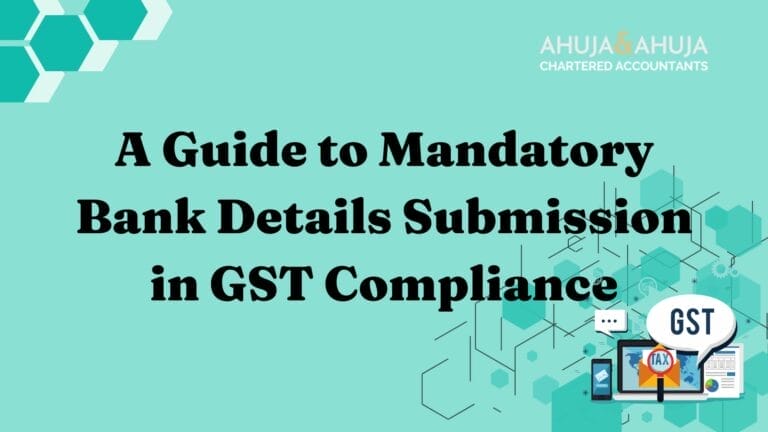All About LUT in GST for Exporters: What is it, How it Works, When to Apply, Benefits etc.
As an integral part of the global economy, exporters greatly contribute to India’s economic growth. But to leverage this dynamic space, it’s essential to understand its intricacies, especially related to taxation. Here, the Goods and Services Tax (GST), a comprehensive indirect tax on the manufacture, sale, and consumption of goods and services nationwide, comes into play. GST provides businesses a clear and concise framework that amalgamates several Central and State taxes.
However, under the new GST regime, exporters, who contribute significantly to the Indian economy, faced a major challenge. Their exports became subjected to Integrated Goods and Services Tax (IGST), which required them to upfront pay their tax dues. While it could be claimed back as refunds, it raised issues of tied-up funds and complex refund processes.
Thanks to the Letter of Undertaking (LUT), exporters can now steer clear of these hurdles.
A Letter of Undertaking is a crucial document that allows exporters to ship goods or render services without having to pay IGST, given it’s furnished under the Central Goods and Service Tax Rules, 2017, as GST RFD 11 form. The main idea behind providing this provision is to ease the burden of immediate tax payment from the exporters. This empowers exporters to continue their business operations without their working capital being tied-up in tax payments. So,
exporters can focus on their core business activities, rather than diverting their time and resources in running after tax refunds.
Notably, eligible exporters intending to supply goods or services to India, overseas, or Special Economic Zones (SEZs) without having to worry about immediate IGST payments can leverage LUT. However, it’s far from a blanket solution. Only those exporters who have not been accused of serious tax evasion or a crime involving an amount exceeding INR 250 lakhs under GST laws can apply for LUT.
So, automating their GST compliance using advanced solutions like GST Refund Services can be significantly beneficial. And taking proactive steps, like preparing in advance for the GST Checklist Action Points can make the whole process much easier.
To ensure you legibly enjoy the benefits of LUT, adhering to all regulations, and replying to all necessary ASMT-10 notices, it is advisable to stay updated and well-informed.
Advantages of LUT
In the previous part, we discussed the significance of the Letter of Undertaking (LUT) under GST for exporters. Now, let’s explore the various advantages that exporters can enjoy by opting for an LUT.
- Tax-Free Export: By opting for an LUT, exporters can conduct their export transactions without the immediate burden of tax payment. Unlike the alternative method where taxes are paid upfront and later reclaimed as refunds for zero-rated exports, LUT exempts exporters from making such payments. This provides significant cash flow relief and enhances competitiveness in the international market.
- Simplified Process: The LUT simplifies the entire export process for businesses. It allows exporters to avoid the complexities associated with claiming tax refunds and eliminates the need for follow-ups with tax authorities. Hence, exporters can save considerable time and effort, enabling them to focus on core business activities and bolster productivity.
- Unblocked Working Capital: A significant advantage of filing an LUT is that it keeps the working capital of exporters unblocked. Instead of the funds being tied up in tax payments, exporters can utilize them for day-to-day operations, expansion plans, or investment in the growth of their businesses. For small and medium-sized enterprises (SMEs) grappling with limited resources, this can be a game-changer, enabling them to access much-needed liquidity.
- Liberated Resources: Regular exporters benefit from the longevity aspect of the LUT. Once filed, the LUT remains valid for the entire financial year. This minimizes the need for repetitive filings and frees up valuable resources that would have otherwise been spent on paperwork and compliance-related activities. Thus, exporters can allocate their time, effort, and resources towards enhancing product quality, exploring new markets, and improving customer satisfaction.
Now, let’s take a closer look at the eligibility criteria for filing an LUT under GST.
To be eligible for filing an LUT, the exporter must:
- Intend to supply goods or services to India, overseas, or Special Economic Zones (SEZs).
- Be a registered entity under the Goods and Services Tax (GST) regime.
- Not be involved in any criminal activities or tax evasion of an amount exceeding INR 250 lakhs under GST laws.
It is essential for exporters to ensure they meet these criteria before applying for an LUT.
In addition to meeting the eligibility requirements, exporters must also provide certain documents while filing an LUT. These documents include:
- KYC documents of two witnesses.
- Nature of employment of witnesses.
- Copy of the last year’s LUT (if applicable).
- PAN card of the company.
- Authorized person’s KYC.
- Certificate of Importer Exporter Code (IEC).
- Form GST RFD 11.
- LUT cover letter with an official signature serving as an acceptance request.
- Returned/canceled cheque.
Step by Step Process of Filing Letter of Undertaking (LUT)
In the previous parts, we discussed the benefits of filing an LUT and the eligibility criteria for exporters. Now, let’s delve into the step-by-step process of filing an LUT certificate under GST.
- Log in to the GST Portal: To begin the process, exporters need to log in to the GST portal using their registered credentials.
- Access the LUT Filing Option: Under the “SERVICE TAB” on the portal, select the “USER SERVICES” drop-down menu. From the options available, choose “FURNISH LETTER OF UNDERTAKING (LUT).”
- Select the Financial Year: Choose the financial year for which you want to file the LUT. Generally, it follows the Indian financial year, which starts from April 1st and ends on March 31st.
- Upload Last Financial Year’s LUT (if applicable): If you have filed an LUT in the previous financial year, upload a PDF copy of that LUT.
- Fill in Witness Details: Provide the names, addresses, and occupations of two witnesses who will validate the LUT document.
- Fill in the Place of Filing: Enter the place where the LUT is being filed.
- Preview the Form: Review the filled-in form to ensure accuracy and completeness of the information provided.
- Sign and Submit the LUT: The application can be signed using a registered digital signature certificate or an electronic verification code. Select the appropriate option and submit the form. Once signed and submitted, the form cannot be edited.
- Download the LUT Application: After successful submission, you can download the LUT application from the GST portal for future reference.
By following these steps, exporters can file their LUT and enjoy the benefits of tax-free exports without the hassle of immediate payment.
It is important to note that the validity of an LUT is applicable for the current financial year from the date of its submission. For instance, if an LUT is furnished in the FY 2020-2021, its expiry date will be on March 31st, 2021. Therefore, exporters need to file a fresh LUT for each financial year.
Filing an LUT is a strategic move for exporters, enabling them to conduct tax-free exports, simplify their business processes, and unblock working capital. It paves the way for increased efficiency, reduced compliance burden, and enhanced competitiveness in the global market.
Disclaimer
The materials provided herein are solely for educational and informational purposes. No attorney/professional-client relationship is created when you access or use the site or the materials. The information presented on this site does not constitute legal or professional advice and should not be relied upon for such purposes or used as a substitute for professional or legal advice.







